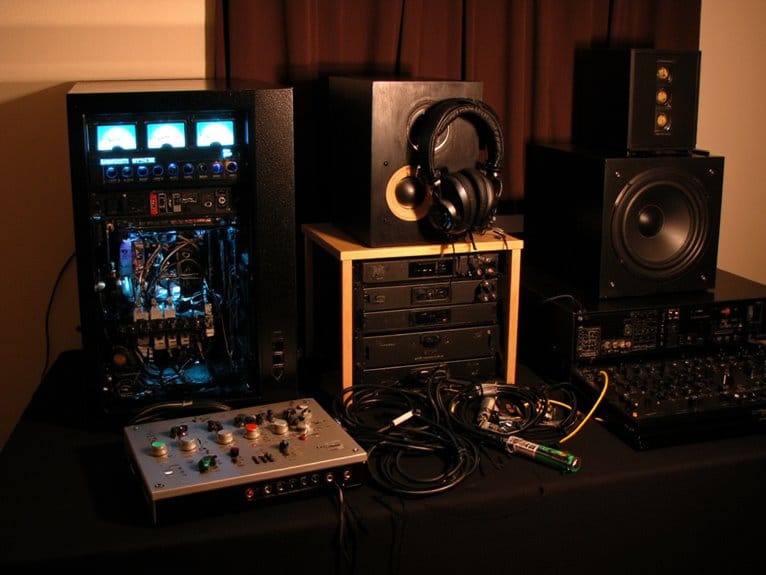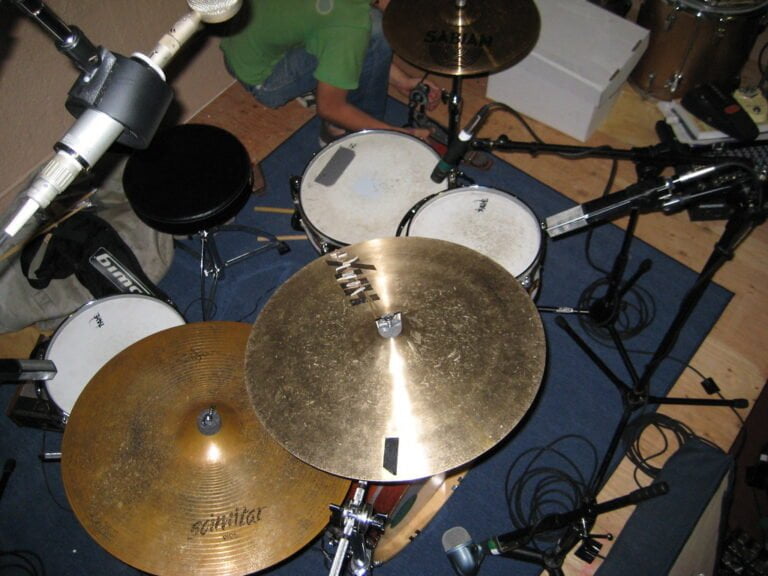What Is the Bpm of Fast Drumming?
Fast drumming is generally considered to exceed 160 beats per minute (BPM), with advanced drummers often reaching velocities of 200 BPM or higher in various genres. To achieve such speeds, drummers must develop technical proficiency, muscle memory, and precise footwork. Metal drummers, for instance, employ techniques like heel-toe and ankle movement to execute blistering double bass patterns at over 250 BPM. Jazz drummers, on the other hand, showcase lightning-quick snare work at velocities exceeding 300 BPM. The intricacies of fast drumming involve a complex interplay of neurological, muscular, and kinesthetic factors, and exploring these concepts further reveals the真.masterful artistry behind extreme tempos.
We are supported by our audience. When you purchase through links on our site, we may earn an affiliate commission, at no extra cost for you. Learn more.
Defining Fast Drumming in BPM
What constitutes fast drumming in relation to beats per minute (BPM) has been a subject of ongoing debate among drummers and music theorists, with no universally accepted benchmark. However, most professionals agree that drumming speeds exceeding 160 BPM can be considered fast. To achieve such speeds, drummers must develop advanced drumming techniques, including efficient stick movement, precise footwork, and coordinated limb independence. Muscle memory training is also essential, as it allows drummers to execute complex rhythms and patterns with minimal conscious effort. Through dedicated practice and consistent muscle memory training, drummers can develop the technical proficiency necessary to perform at high speeds with precision and control. By mastering these skills, drummers can release their full potential and achieve fast drumming speeds with confidence and accuracy.
The Spectrum of Drumming Speeds
Drumming speeds span a broad spectrum, ranging from the slow and deliberate to the extremely fast, with various sub-ranges and categories emerging within this continuum. This spectrum reflects the drumming technique evolution, as drummers continually push the boundaries of speed and rhythmic complexity exploration. At the slower end, drummers focus on precision and control, while at the faster end, they must develop advanced techniques to maintain accuracy and clarity. Within this spectrum, sub-ranges emerge, such as moderate tempos for rock and pop, and extreme tempos for metal and hardcore genres. Each sub-range requires a unique set of skills and techniques, allowing drummers to specialize and excel in their chosen genre.
Metal's Breakneck Double Bass
As metal music's characteristic aggression and intensity rely heavily on the drummer's ability to execute blistering double bass patterns, the development of extreme speed and precision in this technique has become a hallmark of the genre. The evolution of blast beats has pushed the boundaries of double bass technique, with drummers like Pete Sandoval and George Kollias achieving speeds of over 250 bpm. This requires a highly developed sense of coordination, timing, and physical endurance. Metal drummers employ various techniques to achieve such speeds, including heel-toe technique, ankle movement, and precise pedal control. The result is a sonic onslaught that defines metal's intense, aggressive sound.
Jazz's Lightning Quick Snare Work
While metal's emphasis on double bass patterns has driven the development of extreme speed and precision, jazz drummers have honed their skills in lightning-quick snare work, often reaching velocities of over 300 bpm in complex polyrhythmic passages. This requires advanced snare techniques, including intricate finger independence, precision timing, and nuanced dynamic control. Jazz pioneers such as Buddy Rich, Max Roach, and Tony Williams pushed the boundaries of snare work, incorporating complex rhythmic concepts and sophisticated phrasing into their playing. Their innovations have influenced generations of drummers, shaping the course of jazz drumming and inspiring new levels of technical virtuosity.
The Math Behind Fast Drumming
Breaking down the physical and cognitive processes involved in fast drumming reveals a complex interplay of neurological, muscular, and kinesthetic factors that underpin the drummer's ability to execute rapid, accurate strokes. Drummer physiology plays a vital role, as the development of muscle memory and honed motor skills enable the drummer to access higher tempos. The math behind fast drumming involves the intricate calculation of limb independence, coordination, and timing, allowing drummers to navigate polyrhythmic complexity with ease. As the tempo increases, the drummer's brain must process information at an accelerated rate, making precise adjustments to stroke velocity, angle, and force to maintain rhythmic accuracy. This intricate dance of physical and cognitive processes enables drummers to push the boundaries of speed and technicality.
Genre-Specific BPM Expectations
Across various genres, drummers are expected to adapt to distinct tempo ranges, with certain styles demanding blazing-fast speeds while others require more subdued, nuanced approaches. This highlights the importance of understanding genre-specific BPM expectations to deliver a performance that resonates with the target audience.
Here are some examples of BPM expectations across different genres:
- Thrash Metal: 160-200 BPM, characterized by aggressive, fast-paced rhythms.
- Electronic Dance Music (EDM): 120-140 BPM, often featuring electronic influences and synthesized beats.
- Jazz Fusion: 120-160 BPM, blending complex time signatures with cultural significance and improvisation.
- Progressive Rock: 100-140 BPM, marked by intricate drum patterns and dynamic tempo changes.
Famous Fast Drumming Tracks
From the iconic double-bass assault of Metallica's 'Battery' to the lightning-fast fills of Dream Theater's 'The Glass Prison', famous fast drumming tracks have consistently pushed the limits of technical virtuosity and musical expression. Drumming legends like Neil Peart, Mike Portnoy, and Danny Carey have crafted iconic solos that have become benchmarks for speed and complexity. Tracks like Slayer's 'Reign in Blood' and Megadeth's 'Holy Wars…The Punishment Due' showcase blistering tempos and intricate time signatures, while songs like Rush's 'Tom Sawyer' and Tool's 'Schism' feature intricate polyrhythms and precision playing. These tracks have inspired generations of drummers to push the boundaries of speed and technique, solidifying their place in the pantheon of fast drumming excellence.
Pushing the Limits of Human Speed
As drummers continue to endeavor for faster tempos and more intricate rhythms, the question arises as to whether there are physical limitations to human speed and dexterity behind the kit. While some drummers have achieved remarkable speeds, there are indeed physical constraints that limit human performance.
To push the limits of human speed, drummers can focus on the following:
- Drumming endurance: Building stamina through prolonged practice sessions and exercises.
- Hand speed exercises: Focusing on finger independence, coordination, and acceleration techniques.
- Anatomical efficiency: Optimizing body positioning, grip, and stroke to reduce fatigue and increase speed.
- Neurological adaptation: Training the brain to process complex rhythms and patterns, allowing for increased speed and accuracy.





